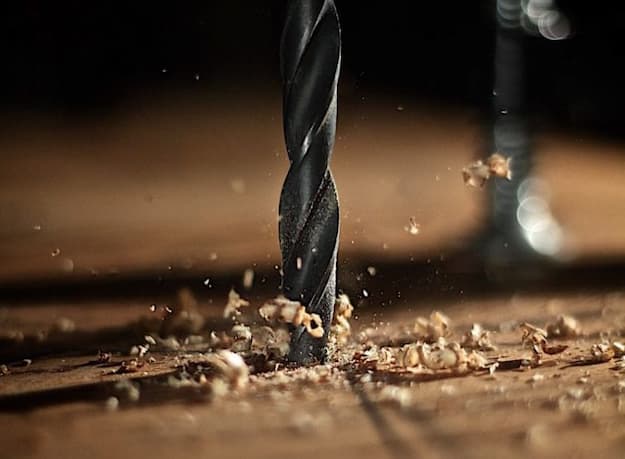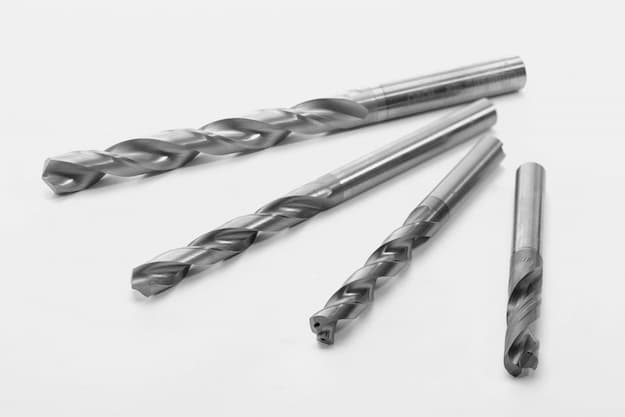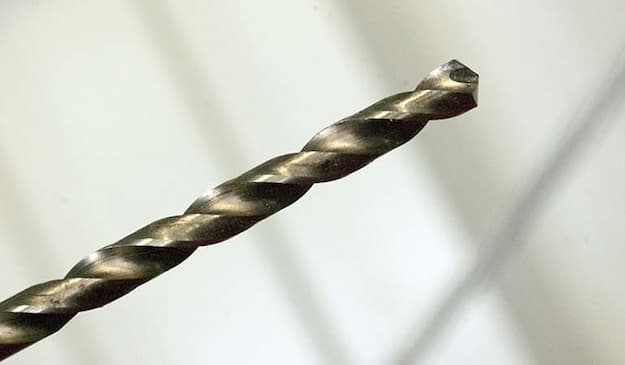Every tradie swears by his drill, but the tool is only half what’s needed to get the job done. Drill bits are the parts that drill into the material to create holes of the required depth and width. These drilling and cutting accessories differ in shape, size and design and are used with a variety of tools and for different materials. Choosing the right bits not only means cleaner and more precise holes and cuts but also faster working times, and parts that last longer.
Basics of Drill Bits
Drill bits are the rotary cutting tools used in corded and cordless drills, hammer drills, impact drivers and drill presses. Their main job is to create holes and cuts with high precision and speed and deliver consistent results.
Parts common across all bit types include points that make the initial contact with the material or product; helical, spiral or straight cutting flutes that bore into the material while removing excess chips, and round or hexagonal shanks that attach the bit to the tool. Design specifics, such as point angles and styles, varied flute and cutting designs, and varied shank profiles and lengths, mean subtle but important differences that have led to dozens of drill bits.
Why Drill Bit Materials Matter?
Where you can use your drill bits largely depends on the materials they’re made of and their coatings. High-speed Steel (HSS) is a general-purpose material, ideally used with softer non-ferrous metals (such as aluminium, copper, zinc and their alloys), most types of wood, and plastic. Cobalt drills are best with harder metals like stainless steel, as the alloyed bits are strong, with high heat and wear resistance to match. Carbide and carbide-tipped bits (tungsten, boron and titanium) move up the hardness scale and work easily in tougher metals as well as concrete, brick, tiles, granite, and stone.
Coatings add wear, corrosion and abrasion resistance, keep bits cool, and help with lubricants. Typical coatings are black oxide for reduced rusting, titanium nitrate for lower wear, and silicone coating to prevent chipping and cracks, both in the drill bits and the workpiece. While these drill bit materials and coatings cover most uses, drilling into exceptionally tough or thick materials is best done with diamond drills. Except for metals, diamond-coated bits drill quickly and easily into many materials, but also endure the least wear, so they last longer.
Ideal Uses of Diamond Drill Bits
The diamond coatings on these bits extend their scope of use. Typical materials diamond bits work with are porcelain tiles, glass, stone, slate, fibreglass, bone, and gemstones. They’re also effective on hardwood. The bits can be sized and attached to various tools, from cordless drills to milling machines, and offer major benefits over other bit types.
Diamond coatings are more than twice as strong and durable as carbides added to standard HSS or cobalt bits. This makes diamond drills extremely durable and resistant to wear, with lower heat levels allowing for slower drilling speeds and more precision. Drilling is also easier and quicker, regardless of the workpiece’s thickness or hardness. Additional benefits include reduced debris and lower noise levels.
Another benefit is that a single bit can be used across different materials without being removed from the drill. There are a few limitations, though. Electroplated diamond drills can’t be used on metals. For this purpose, you’ll be choosing bits with chemical vapour deposition (CVD) or polycrystalline diamond (PCD) bits.
Diamond Drill Bit Types
Diamond bits can be categorised by how the synthetic diamonds are applied and coated to the base drill materials into two basic types – sintered or electroplated. Sintered bits are more durable as the diamonds are coated in multiple layers. As one layer wears down, another takes its place. These types are best for extreme-duty uses, such as drilling into very hard porcelain tiles. Such materials can’t be drilled with other bits.
Electroplated or bonded bits use nickel as a bonding agent. They’re a low-cost option with diamonds applied only to the tips. While effective for cutting, grinding and drilling into most materials, the diamond coat can’t be used on metals due to the chemical reaction when the two materials come in contact.
Bits can additionally be classified according to shape. For smaller holes in glass and gemstones, choose solid blunt-nosed diamond drills with diamonds layered on the cutting tips and sides. For larger holes, go with core drills. These are larger-diameter hollowed bits in sizes of up to 300mm and are used mainly with hole saws to create openings for wire routing, holes for hinges or joints in doors and furniture, and more.
How do HSS, Cobalt and Diamond Bits Compare?
Materials and coatings are vital if you want clean holes, less time spent drilling, and drill bits that last. They are also targeted for different uses. HSS bits can be used in most materials and surfaces, but require very high speeds to be effective. This can potentially create heat and slow down work. Harder materials will also eat into the bits faster, so you’ll be replacing a set sooner rather than later.
Cobalt bits are the mainstay of pros, are more durable in most materials they’re meant for, and with higher strength, they can drill into harder and thicker materials. They’ll also last longer, despite costing only slightly more than regular HSS variants. But they too will struggle with exceptionally hard materials, and this is where you’ll be reaching for diamond bits. Synthetic diamonds are relatively simple and cheap to produce, meaning diamond bits can be found for less than many carbide bits. Price is a factor when choosing drill bits, but also choose something that does the job effectively.
Drill Bit Designs and Uses
The wide range of designs means bits are shaped and sized for different purposes. Choose regular twist or ‘jobber’ bits for general use, step drills for making differently-sized holes with a single device, or auger bits for larger holes in wood. Specialty types include Forstner bits for cleaner countersunk holes in wood or when clearing wood waste in joinery, spade bits for rougher holes, and masonry bits in concrete, brick and stone.
All can be optioned in different materials and coatings. Choose the bit with the right hardness for the material you’re working on, shanks that are compatible with your tools, and bits in the right widths and lengths for the intended task. HSS and cobalt bits can be bundled in packaged deals with units in different sizes, while diamond-tipped bits are usually sold separately.



